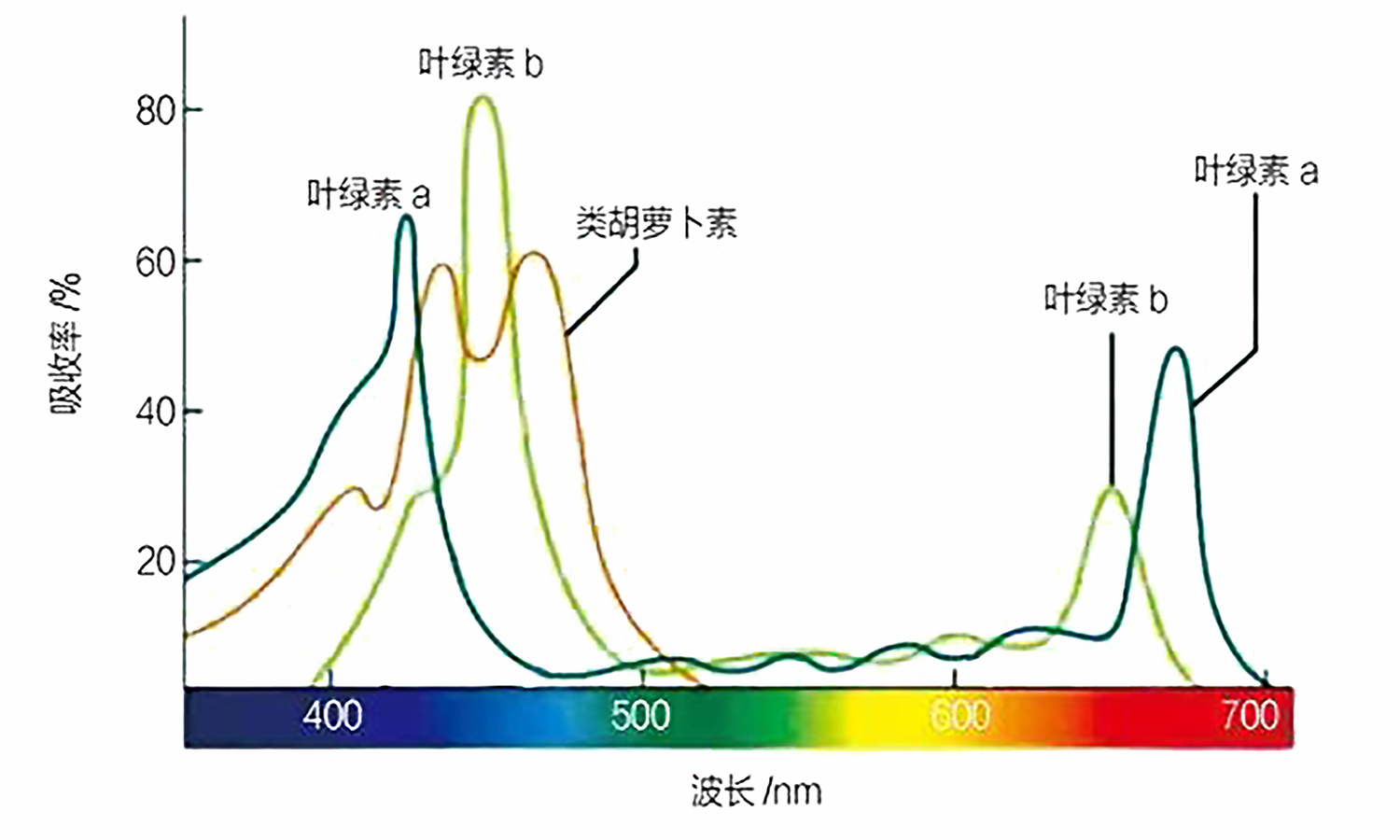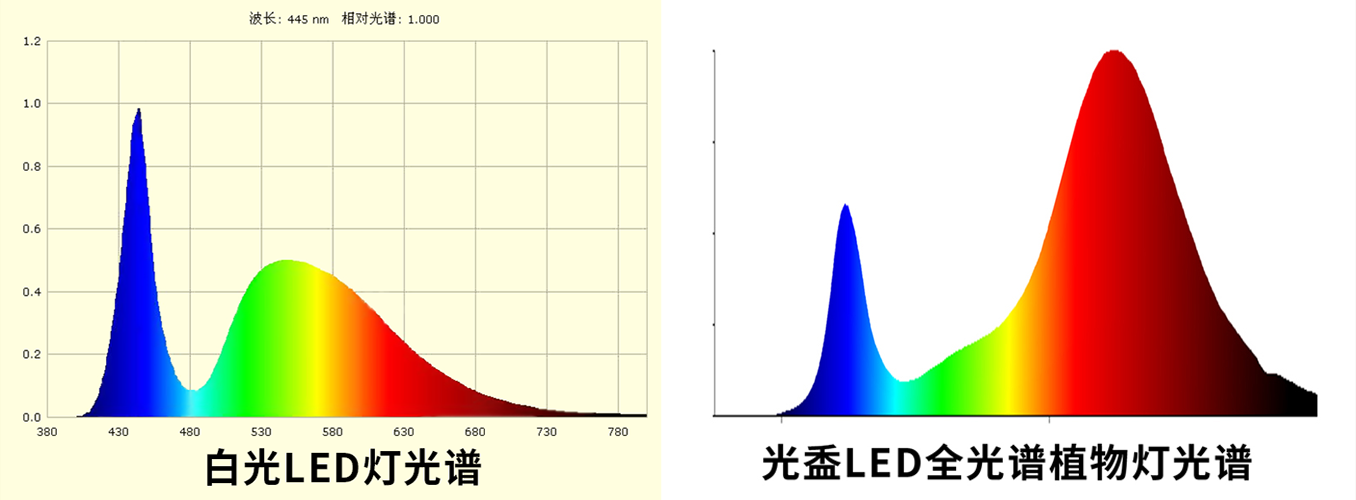
Focus on the R & D and production of plant fill light
As we all know, everything grows by the sun, and the growth of plants depends on the light of the sun for photosynthesis to make plants grow. The basic principle of plant lamp is shown in the principle of plant fill light
In addition to the light intensity and time, are there any other conditions that have an important impact on plant growth?
Yes, in addition to the light intensity and time, another very important part is the spectrum of lamps. Generally speaking, the spectrum of common white LED lamps on the market is white light after mixing blue and green light due to process problems. The reason why the leaves are green is that the demand of plants for green light is far less than that of red and blue light, Too much green light will lead to problems such as crop overgrowth.
Absorption of known pigments in plants to solar spectrum:

The spectrum of ordinary LED lamp and plant lamp are shown in the figure below:

According to the scientific research results, the spectral absorption range of plants is mainly in the blue light of about 400nm of visible light and the red light of about 660nm. At present, our technical level is still unable to understand the detailed work process of chloroplasts in plants related to photosynthesis and crop reproduction, Therefore, the current way of light supplement, whether metal halide lamp or LED lamp, carries out spectral design according to the spectral range required by plants to ensure the light supplement efficiency.